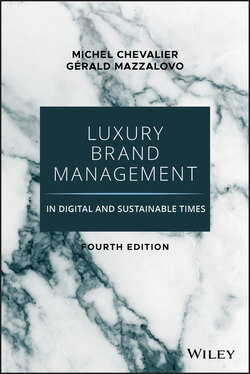Читать книгу Luxury Brand Management in Digital and Sustainable Times - Michel Chevalier - Страница 45
A Very High Break-Even
ОглавлениеIn an average sector, break-even is a function of manufacturing investments and of fixed costs. In the luxury sector, even the smaller brands have to pretend they are powerful and rich, and by doing so they end up with a very high break-even.
For example, every brand must be present everywhere in the world. If a Japanese tourist cannot find his Givenchy or Aquascutum store when he or she visits Milan or New York, he or she may well conclude that these brands are weak and decide to stop buying them in Japan.
At the outset, a brand can be in only one place, like the Café Greco in Rome. But as soon as it starts to become international, consumers expect to find it everywhere. Each store, wherever it is in the world, has fixed costs—rental, staff salaries, and other costs—before it makes its first sale.
Also, in the world of luxury brands, everything from the production process to the sale has to be of top quality. Service has to be perfect, and wherever they are in the world, customers should leave with a special and distinctive carrier bag (for Bottega Veneta, the handles are of leather) bearing the logo and the color of the brand. Even before going into the bag, the product is often expensively packaged and all of the costly glass molds, carton cases, ribbons, or bags have to be manufactured. And this is an area where cost-cutting can be extremely dangerous, because all of these factors contribute to the sense of luxury and to the individual purchase experience.
A brand's standing is often determined by expenses that rarely generate an equivalent gross margin. For example, a fashion brand must start the process by holding an expensive fashion show, twice a year, where the products that are presented are not identical to those that will be sold in the stores: for a given model, the shoulders are a bit larger, the waist a bit tighter, and the skirt a bit shorter on the runway. The cost of making this particular dress may never be recovered because the dress will probably never be sold. Haute couture, in Paris, is another activity designed to promote the image of the brand and to make it stand out, rather than to make money.
Another very expensive investment is to have flagship stores in the home town of the brand; these are invariably progressively bigger in a bid to outdo competitors. Of course, for large-volume stores, this is not so much of a problem, but for a middle-sized brand, this is a painful and unprofitable activity.
All of this adds to the very high break-even and to the difficulty for a new brand to establish itself and develop credibility before it has built sufficient volume to balance all the upfront investments.
